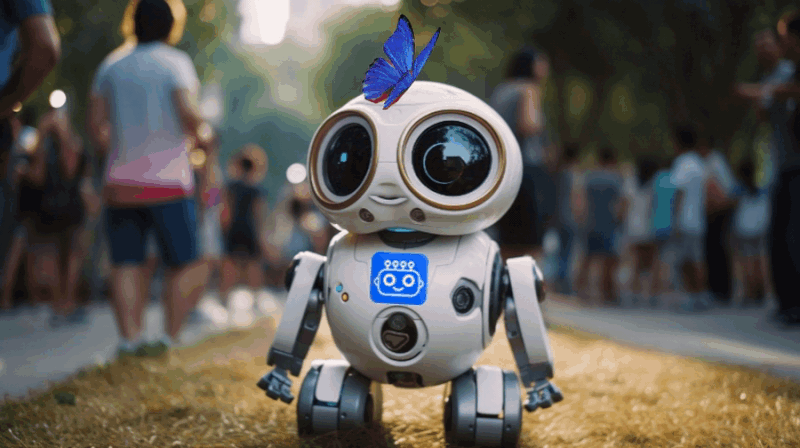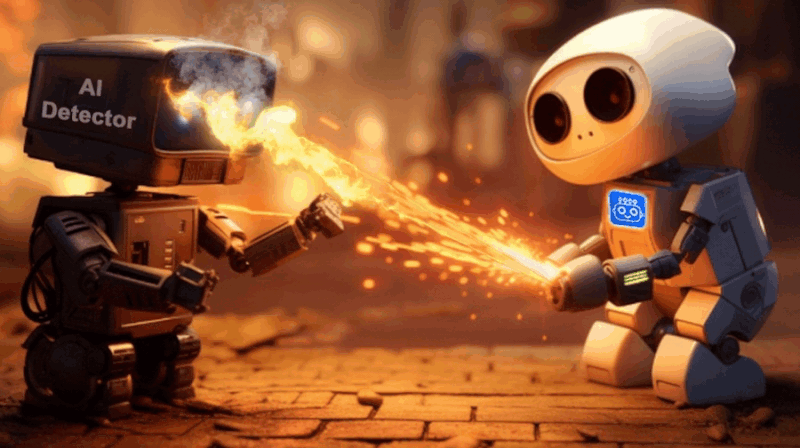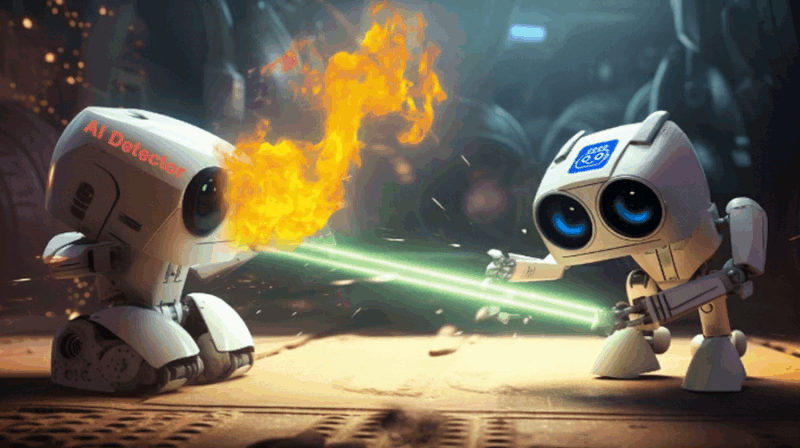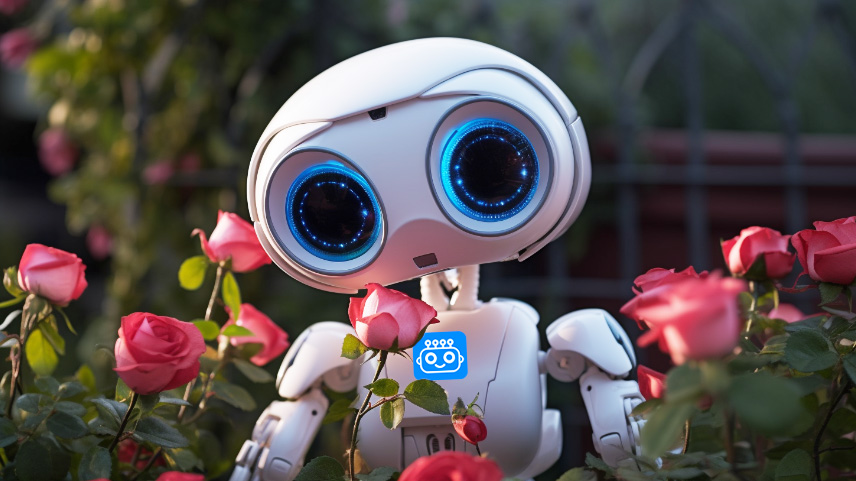Other Related Posts
How To Prevent AI Detection In Writing
How To Avoid AI Writing Detection
How Can I Ensure My AI Writing Passes As Natural-Sounding Content?
What Is Meant By Making An AI-Generated Post Undetectable?
How Can I Make My ChatGPT Essay Sound More Human?
How To Make AI Text Undetectable
How To Make ChatGPT Undetectable
How Accurate Is Undetectable AI?
How To Make AI-Generated Content Undetectable
Is Undetectable AI Safe Enough To Fly Under The Radar?
Does Turnitin Detect Undetectable AI?
Why Is It Important To Humanize AI Writing?
What Are Some Ways To Humanize AI Writing?
What Does It Mean To Humanize A ChatGPT Essay?
How To Make Chat GPT Undetectable
How To Not Get Caught With ChatGPT
Can You Get Caught Using ChatGPT?
How To Make Chat GPT Undetectable
How To Make Chatbot Undetectable
How To Make AI Work Undetectable
Can Turnitin Detect Undetectable AI?
Blending In Or Standing Out? The Ethical Dilemmas Of Making AI Writing Undetectable
Alright, so if you’ve been plugged into the digital scene, you’d know AI is doing a major number with words. Whether it’s firing off emails in a jiffy or crafting those snazzy blogs, AI is clearly making its mark in the content world.
But the real zinger?
It’s the whole gig about making AI writing undetectable.
Think about this – a computer dishing out content that’s not only top-notch but so lifelike it totally slides under the radar. Can you wrap your head around how huge that is?
You might be wondering, “Why’s everyone buzzing about this?”
Well, settle in, and let’s unpack this digital mystery.
AI writing is all about harnessing artificial intelligence to get words on paper. Sounds simple, right? But go a bit deeper and you’re looking at a complex dance of algorithms and machine learning making human-esque creativity happen.
Those AI writing tools? They’re the heavy hitters in this play, belting out everything from gripping novels to hot-off-the-press news.
But wait a sec, there’s a snag.
As AI writing gets more spotlight, it’s also becoming a tad more obvious. And honestly, in a world valuing the real deal, that’s a challenge. This is where adding a human touch to your AI writing steps up.
Imagine an intense game of hide-and-seek. The AI’s hustling to blend, while the detectors are all hands on deck, hunting for clues.
The endgame? For AI to pen down just like us, seamless and slick.
So, read on, because we’re going on a wild ride exploring AI writing, anti-detection magic, and how this tech might shake things up for us.
From Sci-Fi To Now: The Rise Of AI Writing
Here’s the scene: it all started with a word. And then, out of nowhere, AI dives in, turning that word into a storm of narratives.
Yep, we’re chatting about the dawn of AI writing – a total game-changer in tech land.
It’s kind of a trip thinking that machines are now word maestros, huh?
Back in the day, this would’ve sounded super futuristic. But check out the scene now. AI isn’t just dipping its toes; it’s taking the plunge.
So, what lit this fire? It’s all thanks to strides in machine learning, understanding language, and big-time data action. These tech leaps gave AI the skills to mimic and nail human talk, paving the way for AI writing.
Today, AI writing tools aren’t just sidekicks; they’re power-packed systems spitting out all sorts of content.
Whether it’s crafting catchy lines for ads or whipping up news pieces, these tools are flexing their word muscles in ways we never imagined.
But there’s a twist. It’s not just about machines pumping out words.
Nope.
What’s jaw-dropping is how these machines spin yarns that sound … well, incredibly human.
Didn’t expect that twist, did you?
Gizmos hitting the narrative out of the park and even snagging those tricky human feels in text. Impressive, right?
But hold on, because there’s a hiccup.
The sharper AI becomes at writing, the more it sticks out. And being real, that throws a wrench in the whole genuine vibe online.
The solution? Dive deep into the world of giving AI writing a human touch, also known as AI anti-detection. More on that soon.
For now, let’s just soak in the marvel of AI writing. It’s reshaping the creativity landscape big time. We’re entering a fresh chapter, and it’s only the beginning.
The Bumpy Road: Pinpointing The AI-Written Pieces
AI writing? Totally revolutionary. We’re looking at algorithms that nail grammar, context, and yes, even the wild side of creativity.
But here’s the catch. Every cool thing has its challenges. Here, it’s about sniffing out what AI whipped up.
Think it over, and it’s a delicate balance. On one side, spotting AI writing keeps content genuine and straight up. But flip that coin, and it kinda puts a damper on the AI writing celebration.
Visualize this – you’ve clocked in hours perfecting an AI model that creates click magnets, and then a detector just tags it with a “robot-made” sticker.
Bummer, right?
It feels like prepping all night for a costume bash, only for someone to call you out.
The tech that’s spotting AI writing? It’s no walk in the park. It’s always on the lookout for hints in the text that shout “machine did this.”
Don’t forget, even though AI’s made strides in the writing biz, it can sometimes leave machine-y tracks in the sand that give it away.
So, why the fuss about detecting AI writing?
Well, the chips are down. With the flood of fake news and deep fakes, knowing what’s real from what’s not is surely critical. Plus, there’s that thing about authenticity.
A blog post penned by a human just hits differently compared to one written by an AI, right?
But it ain’t all clouds for our AI wordsmiths.
This roadblock, much like a plot twist in a riveting novel, adds a new character to the mix – AI writing anti-detection.
It’s a race against the clock to fly under the radar. Will the AI writers stay one step ahead, or will the detectors snatch victory?
And how do we chart this murky territory without chucking out the authenticity and transparency we all prize? Well, let’s soldier on to figure out, shall we?
Making AI Writing Undetectable: The Talk Of The Town
Hold on to your hats, ’cause we’re diving right into the meat of the matter – AI writing anti-detection.
It’s the digital equivalent of Harry Potter’s invisibility cloak for AI writers in a world itching to strip it away.
So, what’s this AI writing anti-detection business all about?
It’s all the tricks, tweaks, and tactics AI writers use to whip up content that could pass off as human work. Consider it the ultimate getup for an AI writer, carefully put together to blend right in with the human-penned stuff.
The case for AI writing anti-detection gets stronger when you think about the high-stakes chase scene playing out online.
AI’s trying its darnedest to pass as human, but there’s always some tech hawk eyes scanning for any whiff of bot-like writing. Feels like a nail-biting scene from a spy flick, doesn’t it?
Not too long ago, a big-shot news site went and published an article written entirely by an AI. This piece was top-notch – fresh, engaging, and pretty as a picture.
And guess what? It went viral.
The kicker?
No one figured out it was written by an AI until weeks later when the tech company behind it spilled the beans as part of an experiment.
Mind blown, right?
Faced with this tech wizardry, you gotta wonder, “Can these AI writing tools really pull a fast one on us?” And even more crucial, “Should they be able to?”
These ain’t just idle questions, folks. They’re a call to dive headfirst into the wild waters of AI writing anti-detection.
The Good, The Bad, And The AI Writing Anti-Detection
Here’s the twisty part of this whole story – laying out the pros and cons of AI writing anti-detection.
It ain’t all sunshine and rainbows, ya know. Like any gripping tale, there’s drama, there’s tension, and there’s a big ol’ mess that needs sorting.
So, what’s in the win column for AI writing anti-detection?
First off, it serves up a top-shelf user experience. If you’re thumbing through an article and can’t figure if it’s a human or AI who did the scribbling, that’s a big tip of the hat to the tech’s genius.
It means the AI’s really caught the human vibe, and that’s no small feat.
Second, it offers a big-time boost for scalability.
Picture being able to whip up tons of top-quality, human-like content in a blink. Cool beans, right?
It opens a world of possibilities for businesses, publishers, and Joe and Jane Average, from supercharging content production to broadening the scope of written material out there.
But let’s not break out the bubbly just yet. There are potential booby traps to watch out for.
For starters, we’ve got ethical issues to wrangle with. If AI-spun content becomes a dead ringer for human-penned content, it muddies the waters of authorship and authenticity.
Who gets to take a bow for AI-authored content? And what about the value we attach to human creativity and elbow grease?
Then, there’s the risk of it going sideways.
We’re in an era where fake news can go viral faster than you can say ‘share’.
What happens when AI-spun content, undetectable and smooth-talking, is used to fan the flames of false info? Sends a chill down your spine, doesn’t it?
Dr. Sarah Roberts, a big name in AI ethics, once let this zinger fly:
“AI writing anti-detection is a Pandora’s Box. Once opened, it can unleash both mind-blowing benefits and curveballs we didn’t see coming.”
I reckon that pretty much nails our current tight spot.
So, where’s that leave us?
Well, sizing up the pros and cons, it’s clear we’ve got a high-wire act on our hands in the road ahead.
Futurecasting: AI Writing And Anti-Detection
Here we are, teetering on the edge of the great unknown. The future of AI writing and anti-detection is a tantalizing prospect, brimming with promise and potential pitfalls.
So, what’s the road ahead look like?
Well, if the buzz right now is anything to go by, AI writing isn’t just here for a visit; it’s setting up shop.
Snazzier models, a sharper understanding of language, and even the knack to copycat specific writing styles – the horizon looks pretty rosy for AI writing. But with these leaps forward, the catch-me-if-you-can game with detection’s set to heat up.
To my mind, AI writing anti-detection’s gonna have a big part to play.
As AI-crafted content becomes the norm and the call for authenticity rings louder, the hankering for undetectable AI writing’s likely to hit the roof.
But, it’s key to remember this shouldn’t scuttle transparency and ethics.
Dr. Helen Yu, a top-dog AI researcher, recently dropped this gem:
“The future of AI writing isn’t just about pulling off a human disguise. It’s about weaving into our digital tapestry in a way that adds value, plays by ethical rules, and keeps things transparent.”
Her words hit the nail on the head when it comes to the challenges we’re dealing with in AI writing anti-detection.
From where I’m standing, I’m hoping for a future where AI writing and anti-detection go hand in hand, led by a strict set of ethical ground rules.
A place where AI-crafted content can blossom without throwing a wrench in the authenticity, originality, and creativity we appreciate in human writing.
Now, let me lob this ball into your court – what’s your take on the future of AI writing and its anti-detection? Can you see a world where AI-generated content is undetectable, but still stays on the ethical straight and narrow?
Only the ticking clock holds the answers. But let me tell you, it’s gonna be one wild ride!
















